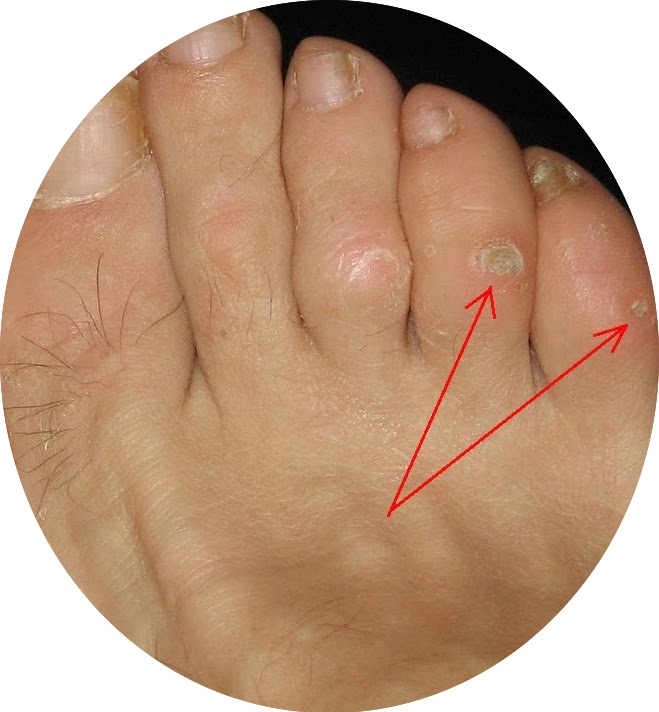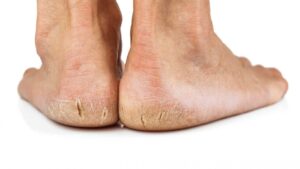Corns can be a real pain, both literally and figuratively. These small, hardened areas of skin can cause discomfort and even affect your daily activities.
But what exactly are corns? How do they form? And most importantly, how can you get rid of them?
In this comprehensive guide, we’ll delve into the causes and treatment of corns. We’ll help you understand what corns are, how to identify them, and the various treatment options available.
Whether you’re dealing with a stubborn corn on your foot or simply want to learn more about foot health, this article is for you.
So, let’s step into the world of foot care and learn how to keep our feet corn-free.
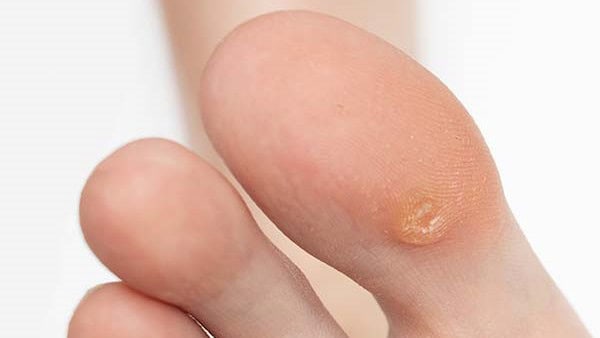
Understanding Corns: What Are They?
Corns are small, hardened patches of skin that develop on your feet. They’re typically round in shape and can cause a great deal of discomfort when you walk or wear shoes.
They form due to repeated friction or pressure on a specific area of your foot. This could be due to wearing ill-fitting shoes or having a certain foot structure. Here are some key characteristics of corns:
- They’re often found on non-weight-bearing parts of the foot, like the tops and sides of your toes.
- Corns can be hard or soft, depending on their location and the amount of pressure they’re subjected to.
- They’re usually painful when pressed.
Common Causes of Corns on Feet
Corns are primarily caused by pressure and friction on the skin of your feet. This can occur due to various reasons, some of which are within your control, while others may not be.
The most common causes include wearing tight shoes, not wearing socks, and walking or standing for long periods. Certain foot deformities, such as bunions or hammertoes, can also lead to corn development. Here are some common causes of corns:
- Wearing tight or ill-fitting shoes
- Not wearing socks with shoes
- Walking or standing for long periods
- Foot deformities like bunions or hammertoes
The Role of Footwear in Corn Development
Your choice of footwear plays a significant role in the development of corns. Shoes that are too tight, too loose, or don’t fit properly can cause friction and pressure on your feet.
High heels, for instance, can squeeze the front of your foot, leading to corns. On the other hand, loose shoes can cause your foot to slide and rub against the shoe.
Types of Corns and How to Identify Them
Corns come in different types, each with its unique characteristics. The three main types are hard corns, soft corns, and seed corns.
Hard corns are the most common and usually appear on the tops and sides of your toes. Soft corns, on the other hand, typically develop between the toes. Seed corns are usually found on the bottom of the foot and are much smaller than the other types. Here’s a quick rundown:
- Hard corns: Found on tops and sides of toes
- Soft corns: Develop between toes
- Seed corns: Found on the bottom of the foot
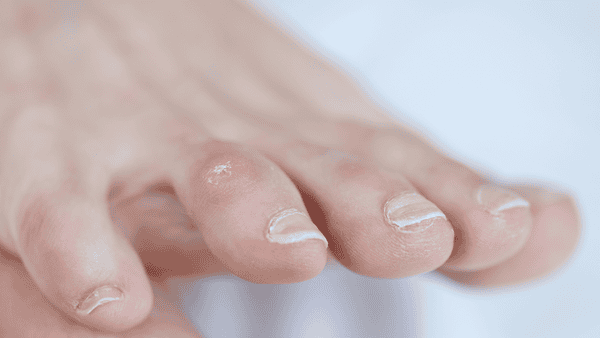
What Does a Corn Look Like?
A corn typically appears as a small, hard, and round bump on the skin. It’s often surrounded by inflamed skin and can be painful when pressed.
Corns can be mistaken for calluses or warts due to their similar appearance. However, unlike calluses, corns have a hard center and are often painful when pressure is applied.
Home Remedies for Corn Removal
There are several home remedies that can help in the removal of corns. These remedies are easy to follow and can be done with items commonly found in most households.
Some of the most effective home remedies include soaking your feet in warm water, using a pumice stone to gently file the corn, and applying over-the-counter corn pads. Here’s a step-by-step guide:
- Soak your feet in warm water for about 15 minutes to soften the corn.
- Gently rub the corn with a pumice stone to remove the dead skin.
- Apply an over-the-counter corn pad to the area.
- Repeat this process daily until the corn is removed.
How to Safely Trim Corns and Calluses
If you have a corn or callus, you might be tempted to trim it yourself. However, this should be done with caution to avoid causing more harm than good.
Always use a sterilized tool and don’t cut too deeply to avoid infection. If you’re unsure or if the corn or callus is painful, it’s best to seek professional help.
When to Seek Professional Foot Corn Treatment
While home remedies can be effective, there are times when professional help is needed. If your corn is causing severe pain, or if it becomes red and swollen, it’s time to see a doctor.
Also, individuals with diabetes or poor circulation should always seek professional help for foot issues, as they are at higher risk for complications.
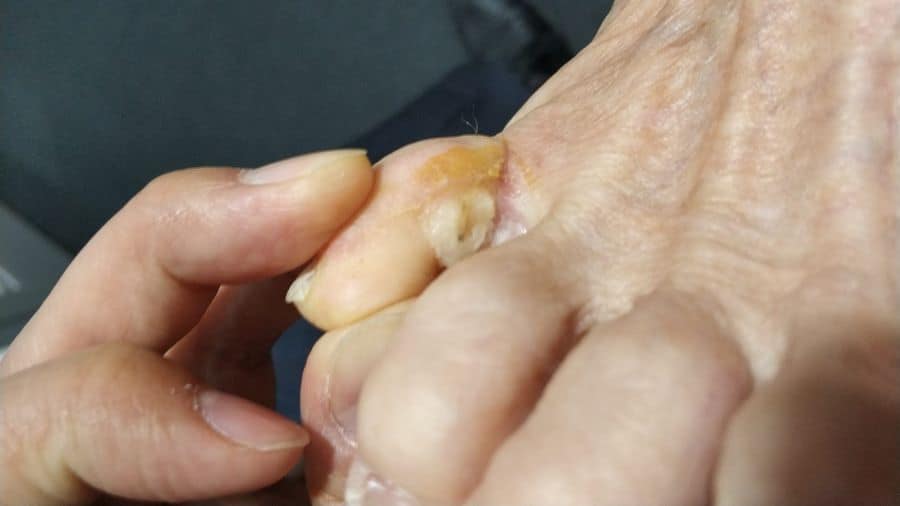
Medical Interventions for Corn Removal
Podiatrists have several methods for treating corns. These treatments are typically more effective and faster than home remedies.
Some of the most common medical treatments include:
- Debriding the hard skin and removing the center with a scale (painless)
- Looking at foot mechanics to find out the cause
- Using padding and orthotics to offload the area to stop it coming back.
Remember, it’s always best to consult with a Podiatrist before starting any treatment plan.
Preventing Corns: Tips and Best Practices
Preventing corns is often easier than treating them. The key is to reduce friction and pressure on your feet.
Here are some tips to help you prevent corns:
- Wear shoes that fit properly. They should be comfortable, with enough room for your toes.
- Keep your feet clean and dry. Moisture can soften the skin and make it more prone to corns.
- Use protective pads or cushions if you have areas that are prone to corns.
- Regularly moisturize your feet to keep the skin soft and supple.
- Regular medical pedicures with your podiatrist
The Importance of Proper Foot Care and Hygiene
Proper foot care and hygiene are crucial in preventing corns. This includes washing your feet daily, drying them thoroughly, and using a moisturizer.
Also, avoid walking barefoot as much as possible. This can expose your feet to unnecessary friction and pressure, leading to corns.
Conclusion: Maintaining Healthy Feet
In conclusion, maintaining healthy feet is a combination of good hygiene, proper footwear, and regular foot care.
Remember, if corns persist or cause discomfort, it’s important to seek professional help. Don’t let corns stand in the way of your comfort and health.

